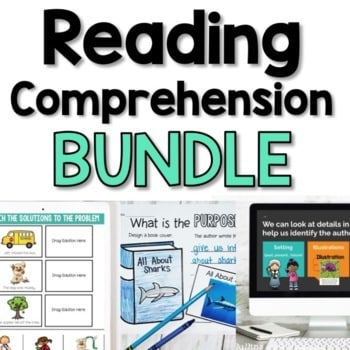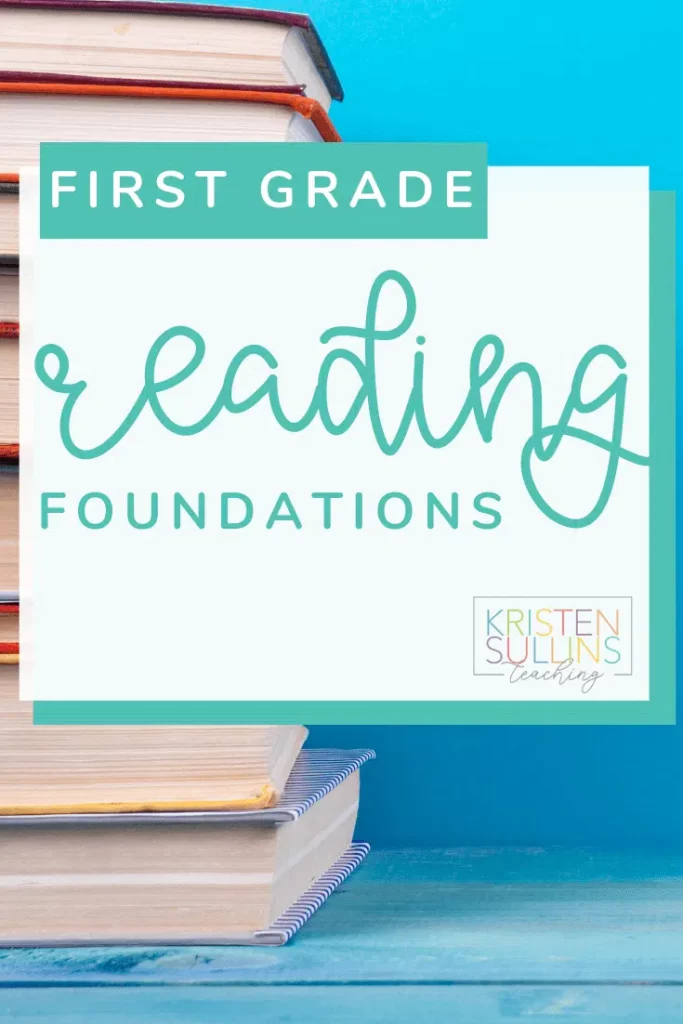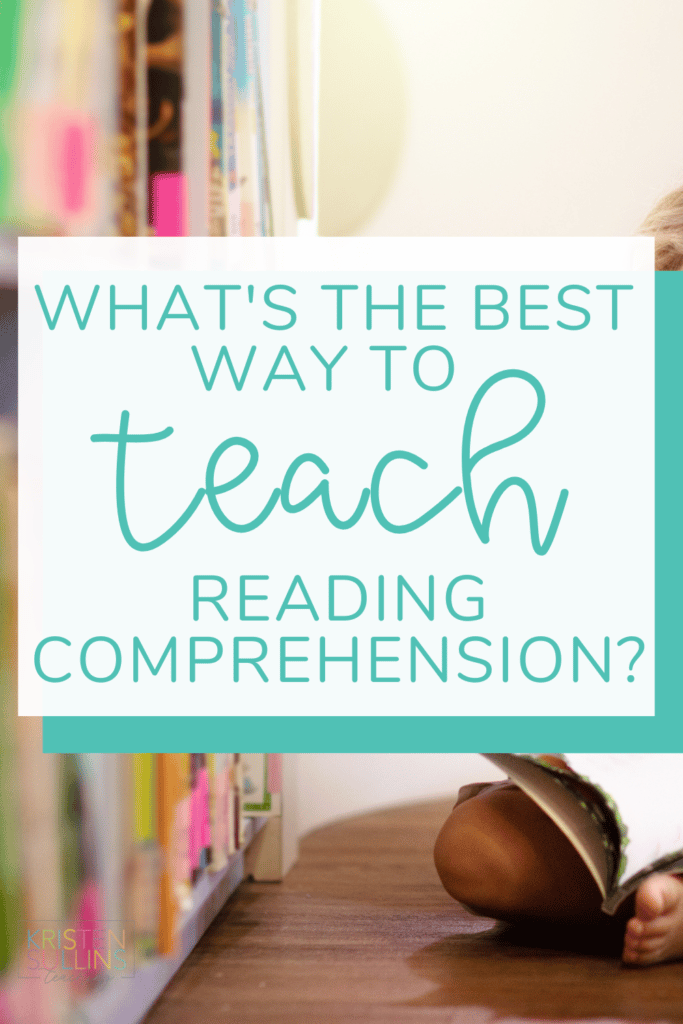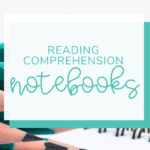Have you ever heard of Comprehension Notebooks in First Grade? No? Well, keep reading my friend.
Early readers first begin by reading the illustrations and then words. The ultimate goal of reading, however, is comprehension. Not only do students need to know HOW to read, they need to understand what it is they are reading and ultimately learn and grow from it.
I was once told, “the kids who struggled in school make the best teachers”, now whether that is true or not, I have no idea, but I hold on to that because I was a struggling reader.
In my early reading days I could get through a whole passage and then have NO CLUE what I just read. I needed strategies for comprehension, but I just didn’t have any. This followed me as I continued with my education.
Even though I was getting A’s once I reached high school, it was because I had developed a read-write-memorize mindset. I would read something, write it down in my notebook and memorize it before the test. Once the test was done, I would forget it.
That is NOT the goal of reading! Yes, we can’t remember everything we read, but we should be able to develop a better understanding of what it is we read and retain important details.
So, how can we help our students with this? Something I have found very useful is comprehension notebooks. It is never too early to start teaching students how to comprehend texts, and the earlier we teach strategies for comprehension the better.
Comprehension notebooks allow students to be supported and guided in their reading journey.
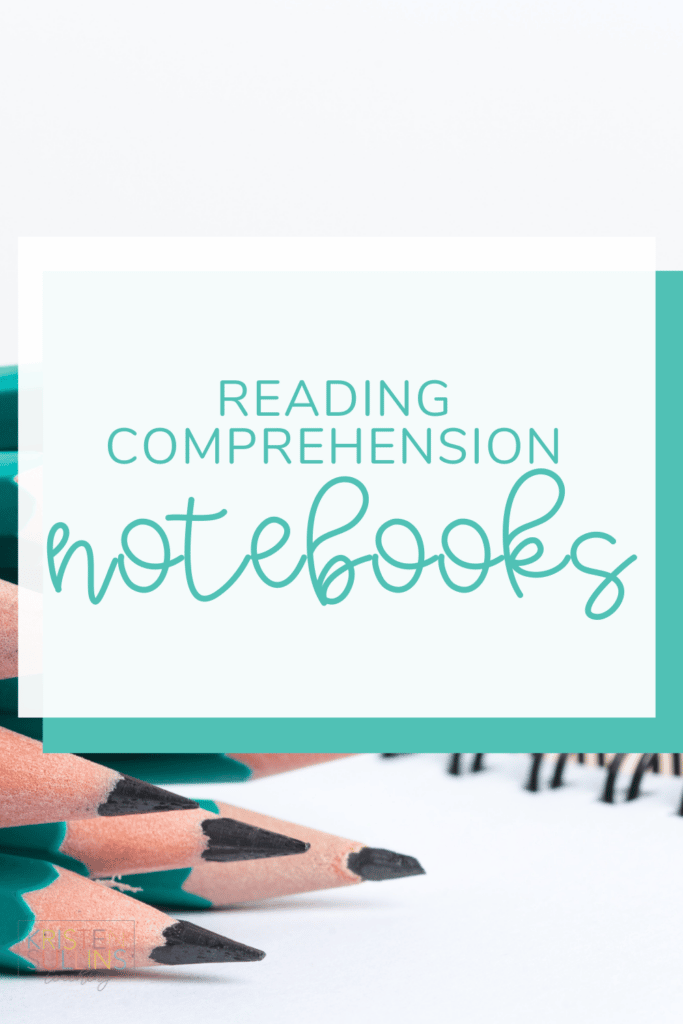
Why use a Comprehension Notebook in First Grade?
Because it is a great way to scaffold the teaching of comprehension! These notebooks start by providing an age appropriate passage and then provide multiple days of activities to dig into that passage.
In first grade, I always start by doing this whole group at the beginning of the year. This helps students understand my expectations and also provides reading assistance to those who may not be ready to read the passage on their own yet.
You can purchase comprehension notebooks, or you can get grade level appropriate passages and use a regular old notebook. I have used both and found them to be very successful with my students.
Here is some info on how I set it up using a regular notebook.
Setting up your Comprehension Notebook for First Grade
Each student is given a notebook that we use only for reading comprehension. Nothing else goes in here. It is not a notebook for free writing or story telling, it is reading comprehension only.
Here is a rundown of what we focus on earlier in the year and how long we take with a given passage:
Day 1: Read passage, glue it into your reading notebook and identify main character and problem (writing this into notebook)
Day 2: Read passage and visualize – students draw an illustration to go with passage
Day 3: Read passage and identify then draw/write plot*
Day 4: Vocabulary focus – identify key vocab words and write sentences (or you can do fill-in-the-blanks) using these words
Day 5: Partner read the passage and share what they know about the reading – they can ask their partner questions from information they put in their notebooks on previous days. For example: “what did you draw when you visualized the story? Here is what I did.” Or “what was the problem in this passage” etc.
*Plot develops as the year progresses; in the beginning we focus on the characters and as the year goes on we add in setting, theme, main character, storyline (beginning middle end), cause and effect, and then problem and solution.
This is just a basic rundown of one week using a comprehension notebook. Each week you are teaching ELAR/ELA/LA you are introducing new concepts. I typically wait until students have a strong understanding of a new concept before incorporating them into the comprehension notebooks.


Year long practice in your Comprehension Notebook
These comprehension notebooks provide students with rigorous and focused daily practice.
Students are supported and challenged while they develop as readers.
I have found that using comprehension notebooks has helped my students a lot by breaking down the key concepts in reading in a way that isn’t overwhelming.
I have seen a lot of success with these comprehension notebooks and have grown to really enjoy using them in my classroom.
As the year progresses I stop using them for the whole group and will incorporate them into one of my literacy stations. The I do, we do, you do method is a recurring theme in my classroom.
It is so important that we make our expectations incredibly clear for our students.
The best way to do that is modeling and practice.
Gradually releasing responsibly to our students is vital in helping them gain confidence and independence in all areas.
Implementing a Comprehension Notebook
Like I said before I always start this whole group. In the beginning they can be time consuming due to the fact that students don’t know how to do them yet.
Even the gluing of the passages into the notebooks is surprisingly difficult for some students.
I always start by simply teaching how to use a notebook. We don’t open up to the middle page or start on the last page.
We start at the beginning. As silly as this sounds, we even practice turning the pages of the notebook.
The first two weeks I use very simple passages with easy day 1-5 activities.
This helps students understand how I want them to set up their notebooks and instill confidence right off the bat.
My time goal with using these comprehension notebooks is to never exceed 10 minutes.
Ultimately these will go into a station and students have to complete their daily activity in that amount of time.
This is completely doable and as the passages and work gets more difficult, students' abilities also have risen and we do a pretty good job at staying in that time frame.
Using Technology with your Comprehension Notebooks
Something I have found students really enjoy is seeing themselves! If you have iPads, or computers with a camera this is so fun for them.
On day 5, rather than working with a friend I give my students the option to reflect by recording themselves.
They do have the option to read the passage, or reflect by discussing the storyline (BME), sharing their thoughts or reading from their comprehension notebook work from the week.
Once they finish, if time permits, they may go watch another student's reflection. They love sharing and watching one another. It’s great fun for them and is still encouraging comprehension!
Overall, I have found using comprehension notebooks is an easy and effective way to encourage students to learn and use comprehension skills. Comprehension is, as I said before, the ultimate goal of reading.
By providing students with multiple ways to learn and understand text, we can help them harness skills they will need as text progressively gets harder.
Comprehension notebooks are not the only way I teach comprehension skills in my classroom, they are simply a tool.
One of the many tools, but one I have grown very fond of for its simplicity and effectiveness.

More Reading Comprehension Activities
Ready to have comprehension tools at your fingertips for the entire year?
This YEAR LONG Curriculum is a 10 unit system of Reading Comprehension Skills that you can refer back to AGAIN and AGAIN!

